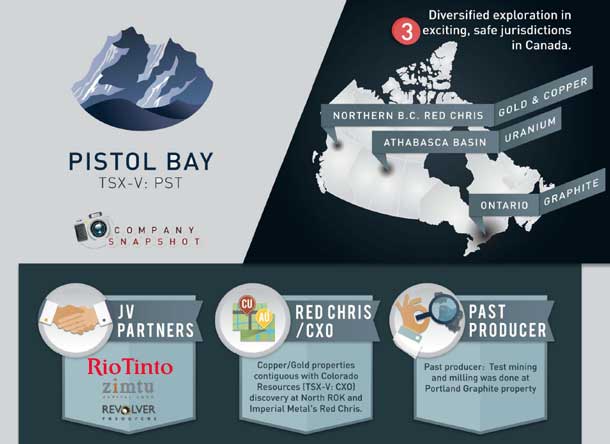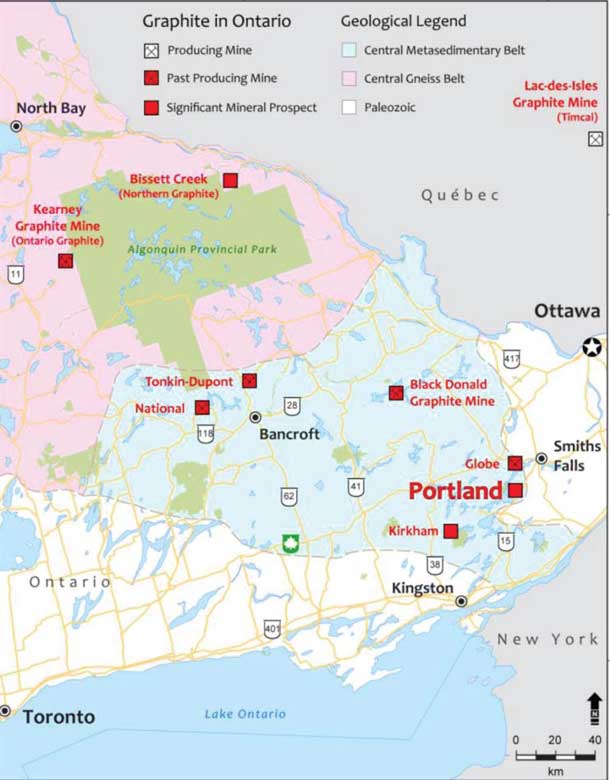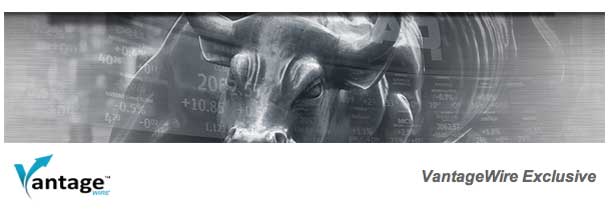
Graphite Generates Excitement in Mining
VANCOUVER – Mining – North America’s next graphite mine is still a big question mark. The gas pedal on graphite development in Canada has been firmly pressed for almost three years now. With the amount of exploration and development happening in both Ontario and Quebec, it’s only a matter of time before multinational funding starts putting these ore bodies into operation.
Pistol Bay Delivering Signs of Speedy Opportunity Towards Graphite Production
Previous graphite producer Timcal suspended production earlier this June. However, There are now plenty of juniors for investors to choose from in the graphite space. With plenty of markers for a speedier timeline to production, Pistol Bay Mining [TSX.V: PST] may be in the right place at the right time to be the first eastern Canadian property to be put into production.
Located in a prolific and proven carbon rich area, Pistol Bay’s Portland graphite project already has all of the necessary attributes to succeed:
- · Past producer
- · Historical reserve of 295,000 tonnes at 5.8% CG
- · 73 holes drilled (5,844 metres)
- · Three zones of high-quality mineralization
- · 1,700m of total strike length
- · Power, Water, and located on Highway 15
Former owner Victoria Graphite did a lot of work on the property to produce a 34 tonne bulk sample in 1989. Processed by Lakefield Research, the historic probable resource of 295,000 tonnes was getting 91-93% recovery using rudimentary flotation circuits. Flake size on the property showed excellent size and shape for more than 65% of the concentrate.
Overall, the previous results give Pistol Bay added investment potential as the company works toward to a 43-101 compliance resource.
The original resource calculation is only a small percentage of the graphite found on the property. For starters, it was only calculated to 20 metres of depth. Many of the 73 original holes were drilled upwards of 100 metres.
Secondly, the Portland Property averaged 6% CG, whereas there were intersections assayed with grades higher than 10%. Like most mining operations, one typically talks about the head grade and the size of the resource but the true indicator in the industrial minerals space comes down to quality and proximity to markets.
Now, with more modern attention to detail, and a standard convention in sampling and analysis, the company can improve upon the past. Pistol Bay will employ the necessary resources to prove the grade, expand the resource and ultimately define the metallurgy on the property.
Pistol Bay’s location on Highway 15 between Kingston and Ottawa has everything: Power, water, highway, rail, and proximity to key markets. It even has a test mill in place on the property from the Victoria Graphite era that produced 100 tonnes a day.
For Pistol Bay, the entire package adds up to a potentially swift development phase. With a better understanding of the terrain, and enhanced technology, it appears that the Pistol Bay attempt will be much more streamlined, and less risky than Victoria Graphite was. As well, this time it’ll most likely involve a major industry player to help fund the project properly into sustainable production.
A HISTORY WITH MAJORS
While Portland is the flaghip, Pistol Bay touts three diverse projects in three different provinces, with three different minerals. The other two assets are its Summit Lake property—that includes 8,500 hectares in the Red Chris Copper-Gold Camp—and its “C Blocks” Uranium Properties in Saskatchewan’s Athabasca Basin.
The latter property has given Pistol Bay valuable experience with the inner dealings of being in a partnership with a major. Originally a deal signed with Hathor, but after a takeover a few years ago Pistol Bay found itself partnered with an even larger entity—none other than Rio Tinto.
The arrangement has been mutually beneficial. Rio Tinto has supplied the drilling, while neighbouring blocks owned 100% by Pistol Bay have gone up in value.
The uranium play shows Pistol Bay’s ability to find valuable real estate ahead of the curve. Near the C Blocks is the McArthur River mine—the largest producing uranium mine in the world. In 2011 it accounted for 14% of the world’s production. Further work from the Rio Tinto/Pistol Bay partnership will make strides in getting the C Blocks closer to their own development, should the current trend of results continue.
PORTLAND’S JURISDICTION
Ontario is a friendly place to work, with ample power, water, infrastructure and a long mining history, the province brings a lot benefits to pass along to companies investing within it.
At times however, land disputes with residents have been a problem. Pistol Bay has made sure to get around that in a smart way. The entire Portland property sits atop privately owned land thus eliminating inordinate amounts of public discourse and possible problems with other parties in the future.
Option agreements are in place and should Pistol Bay want to acquire the land outright, agreements have already been signed with the current landowners who are ready to step aside and sell their land.
Since the property has already been mined before, it’s been previously permitted to conduct mining activity. Getting a renewed Mine Closure Plan permit on an area previously licensed is much easier than dealing with the Ontario Ministry (MNDM) for the first time
THE KEY ADVISOR
An essential addition to the company was made in June when it added advisor Paul Gorman. As President of Mega Graphite, Gorman is familiar with industrial minerals and the road to production.
One of Mega Graphite’s biggest assets was a property adjacent to where the Portland Graphite Property is now. Going forward, Gorman is now set to help run the project for Pistol Bay in its quest to revive this past producer.
Beyond what he brings from a technical standpoint, Gorman has also interacted with carbon customers. He knows the buyers that are out there, and believes he can court them with Pistol Bay.
Given his level of experience and understanding of the space, his acceptance of the role was a major vote of confidence for the project. The impression given so far has been that he is confident with the position Pistol Bay is in, and believes they should be able to get a partner rather quickly.
THE BOTTOM LINE
Initially Pistol Bay will likely do another bulk sample. By doing so they’ll have all the metallurgical analysis they need to know which end users to show their ore concentrate to for off-take purposes. Upon signing an agreement, Pistol Bay can strategically go back and duplicate the holes and work that was done by Victoria Graphite, the previous owners. With the expansion of the historic resource through future drilling and analysis, the company will then be able to bring the resource up to 43-101 standards. Given the past history of their land package and the infrastructure in place, the company— given the right series of events—could have the ability to produce graphite from their Portland project. Essentially, they’ll need to court the right partner to see them through to production.
Thanks to a previous deal with Hathor, Pistol Bay is already working with a major in the form of Rio Tinto on its uranium project in Saskatchewan. Though Rio Tinto hasn’t really shown much interest in the graphite space, other majors might see their ability to work well with Rio Tinto as a bonus.
The benefit of having Paul Gorman and his rolodex of potential buyers from his past could be a major boost as well in landing the right partner.
It’s in the last mile that a company can perfect the purity of their graphite, before sending off to their end user. Doing so makes the product much more enticing, as the purification process is mighty costly.
Should the company be able to prove their ability to sell high-purity graphite, they’ll be able to fetch prices of upwards of $1,600 per ton. It’s then the cost of shipping that is the concern. Luckily for Pistol Bay, they’re located close enough to the St Laurence Seaway that a shipping operation won’t be too tedious.
All in all, the Portland project has many of the markings of a potential producer. It’s had it in the past and it has a former producing president advising operations, not to mention the strategic location and the infrastructure already in place. Only time will tell if Pistol Bay sneaks in as the dark horse in the race for more Canadian graphite production.
G. Joel Chury
for the Bottom Line Report














